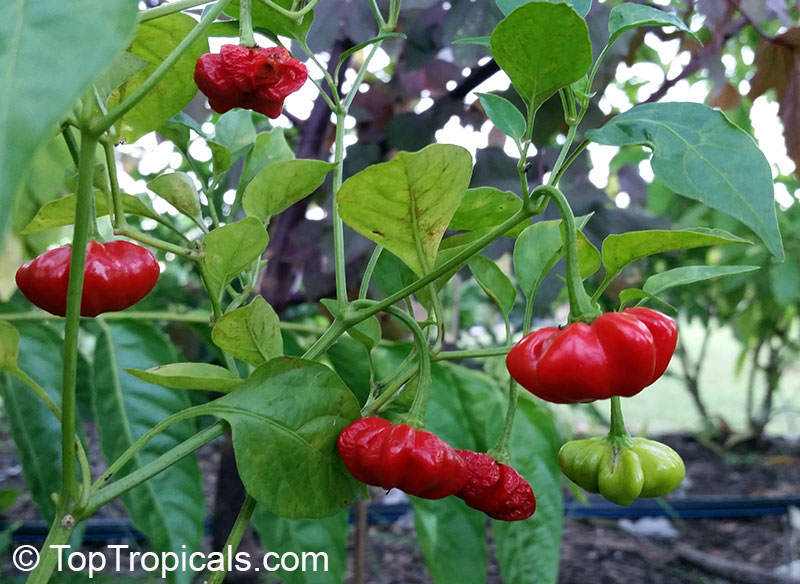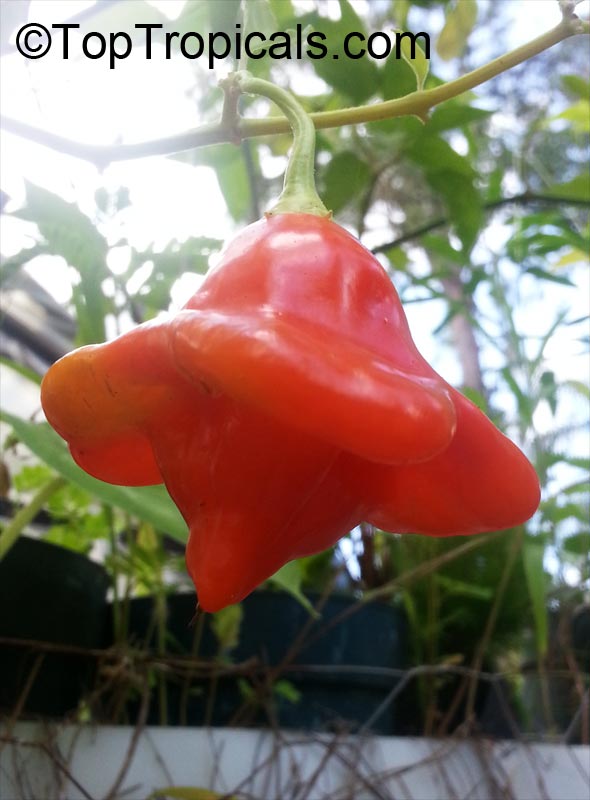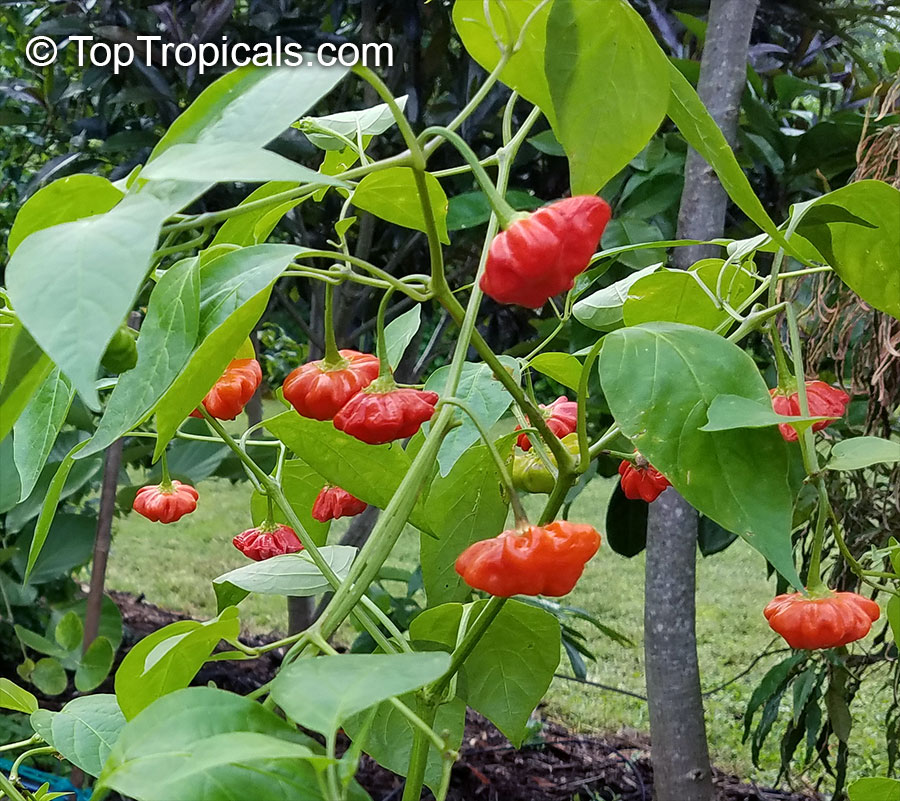Quirky Brazilian Starfish Pepper
by Onika Amell, tropical plant expert
About the Author
Onika Amell was born in farmer's family in Cape Town, South Africa, and always had a keen interest in gardening. She has been a globe-trotter for many years, traveling along with her husband, an engineer, and her life is worth a novel. In Cape Town she worked in groups "Soil for Life and Work for Love", teaching people how to grow their own food, improve their health, and protect the environment. Onika lived in Galilee, Israel, skydiving over 500 jumps and working on the fields planting, harvesting and caring for various crops (Lychee, Avocado, Bananas, etc), helping out in community gardens... In SE Asia, she taught English at business centers... Upon finally settling in SW Florida, she joined the ECHO Global Farms project on teaching farmers/families around the world about effective crop production... Now as a part of Top Tropicals Team, Onika is our plant expert and a columnist. Onika's biggest passions are plants and... of course – cats, who are her children! She has six of them: Itembi, Freddie Mercury, Donald Trump (he is the difficult one), Tigerlilly, Sweetie, and Jaxson.

There is something very rewarding in growing your own peppers. Brazilian Starfish pepper (Capsicum baccatum) is a little bomb of flavor. This is a very uniquely shaped pepper which makes it an excellent ornamental plant. But unlike many other peppers with pretty faces and lacking in flavor, the Brazilian Starfish pepper is delicious too. This pepper is a native from Peru, but domesticated in Brazil - hence the name.
It is hailed for the complex floral and fruity undertones and a medium level of heat for most folks. These fruity and juicy, crunchy peppers are perfect for pickling or just eating raw in salads or salsas. They are irresistible in a glass pickling jar because of their unique shape. Bold and crisp, this pepper is much sought after by foodies and gardeners alike. This is one beautiful pepper!

Just how hot are Brazilian starfish peppers? Like many other peppers, it varies in heat. Some feel it is mild, whilst others are convinced it is hotter. It is generally hotter than a Jalapeño pepper, but do not tend to reach the very hot levels of cayenne pepper or aji amarillos. The heat is closer to a Serrano pepper heat for the most part.
It is a tall plant with a weeping and vine like habit and a prolific producer of dozens of starfish-shaped peppers that mature to a beautiful red color. They are happy in full or part sun and rich, organic soil. Good drainage is very important to prevent root rot. Water regularly, but take care not to overwater. Do not plant outside until all danger of frost has passed. They will be happy in a container as long as you are sure to allow room for root growth. They tend to be annuals in temperate climates and perennials in tropical and sub- tropical climates.
With its weeping shape, dripping in blood red peppers, it begs for a container on a porch, or even a hanging basket. It is simply stunning, whether used as a landscape plant or a container show off. If you are looking for something different in a pepper, the Brazilian Starfish is the one to get. This is not a plant you will find just anywhere in the United States.

Spicy Gourmet Brazilian Starfish and Red Bell Pepper pickles:
Ingredients:
Half pound Brazilian Starfish peppers and 1 red bell pepper
1 cup apple cider vinegar (or white wine vinegar or distilled white vinegar)
1 cup water
2 tablespoons honey or sugar
2 cloves garlic, peeled and smashed
1 teaspoon salt
Method:
Prepare the peppers by remove the tops, seeds and membranes and slicing them thinly.
Smash the garlic in a 28 ounce glass jar. In a small saucepan, combine the vinegar, water, honey and salt. Bring the mixture close to a boil. Stir occasionally.
Remove from the heat and pour the liquid over the peppers. Remove any air pockets with a spoon.
Allow the pickles to cool down to room temperature, screw on the lids and refrigerate.
They should be perfect in just a few days. Pickles will last for at least a month in the refrigerator. Sample often for quality control!
Serve it with any seafood dish for an interesting and spicy kick. It is also particularly tasty with cheese or simply diced up in a salad.
